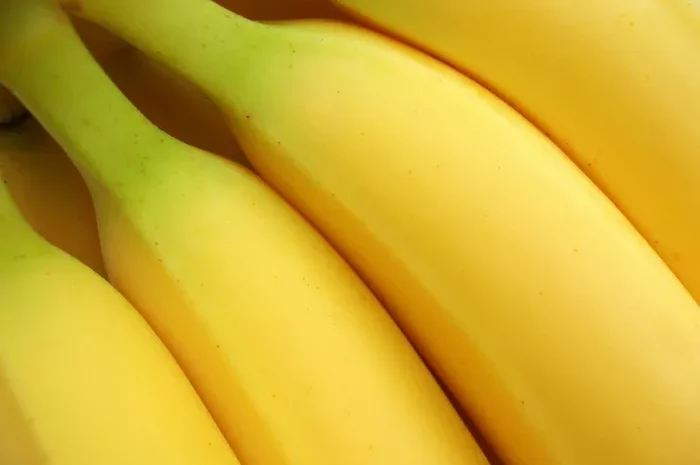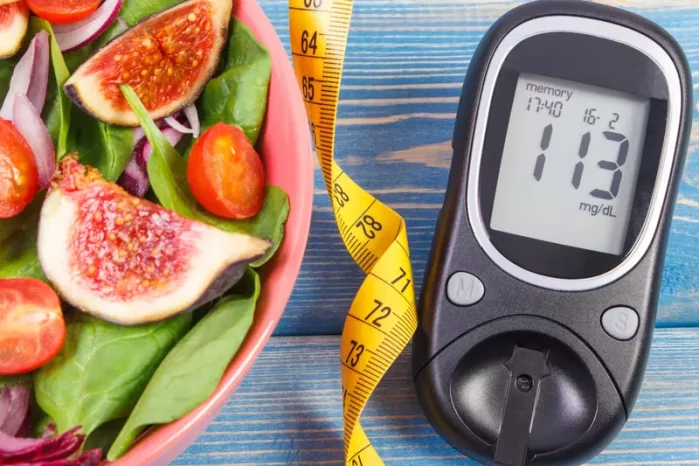Type 2 diabetes affects the way your body metabolizes glucose, the primary source of energy for your cells. Managing this condition requires careful attention to carbohydrate intake, which often places fruits like bananas under scrutiny. Despite their natural sweetness and carb content, bananas are also rich in vital nutrients. This raises an important and frequently asked question in clinical practice: Can you eat bananas if you have type 2 diabetes? The answer is more nuanced than a simple yes or no. In this article, we’ll take a deep dive into the relationship between bananas and blood sugar, debunk common myths, and offer practical strategies for integrating bananas into a balanced diabetic diet.
The Nutritional Profile of a Banana
To understand the impact of bananas on type 2 diabetes, it’s crucial to analyze their nutritional composition. A medium-sized banana (about 118 grams) typically contains:
-
Calories: 105
-
Total carbohydrates: 27 grams
-
Sugar: 14 grams (naturally occurring)
-
Fiber: 3 grams
-
Protein: 1.3 grams
-
Fat: 0.3 grams
-
Potassium: ~422 mg
-
Vitamin B6: ~20% of Daily Value (DV)
-
Vitamin C: ~17% of DV
-
Magnesium: ~8% of DV
While bananas do contain sugar, it’s important to note that this sugar is naturally occurring and embedded within a fiber-rich structure, which alters its effect on blood sugar compared to added or refined sugars.
Glycemic Index (GI) and Glycemic Load (GL): What Do They Tell Us About Bananas?
A helpful way to assess how bananas might affect blood sugar is by looking at the glycemic index (GI) and glycemic load (GL):
Glycemic Index: Bananas have a moderate GI, typically ranging from 42 to 62, depending on ripeness. The riper the banana, the higher the GI.
Glycemic Load: A medium banana has a GL of approximately 11. Anything under 10 is considered low, and under 20 is considered moderate.
This places bananas in the moderate range for glycemic impact. When consumed in moderation, bananas generally do not cause significant spikes in blood glucose, especially when paired with other macronutrients like fat or protein.
Ripe vs. Unripe Bananas: Does It Make a Difference?
Yes, ripeness matters. The more a banana ripens, the more resistant starch it converts into simple sugars like glucose and fructose. Let’s compare the two:
Green or Unripe Bananas:
-
Higher in resistant starch
-
Lower GI
-
Slower absorption in the gut
-
More beneficial for gut microbiota
Ripe Bananas:
-
Higher in sugar
-
Lower in resistant starch
-
Higher GI
-
Sweeter taste
For people with type 2 diabetes, less ripe bananas may be the better choice as they result in a slower and more stable rise in blood sugar.
How Do Bananas Affect Blood Sugar?
The carbohydrate content in bananas, especially the natural sugars, can raise blood glucose levels. However, several factors influence this effect:
Portion Size: A small banana contains around 20 grams of carbohydrates versus nearly 30 grams in a large one. Choosing smaller bananas or half portions can mitigate blood sugar spikes.
Individual Response: Some individuals may experience a greater glycemic response than others, depending on factors like insulin sensitivity, meal timing, and physical activity.
Food Pairings: Consuming bananas alongside protein or healthy fats (e.g., peanut butter or Greek yogurt) can slow down carbohydrate absorption, leading to a more gradual rise in blood sugar.
Timing and Context: Eating a banana as part of a balanced meal or post-exercise snack generally has a more favorable effect on glucose control than eating it alone on an empty stomach.
Bananas and Insulin Resistance
For individuals with insulin resistance—the hallmark of type 2 diabetes—managing the insulin load of meals is essential. The fiber in bananas, particularly soluble fiber, can help improve insulin sensitivity over time by:
-
Slowing digestion
-
Reducing the glycemic response
-
Feeding beneficial gut bacteria
Additionally, resistant starch in greener bananas acts similarly to soluble fiber, supporting better glycemic control and insulin regulation. That said, this benefit is often diminished in very ripe bananas.
The Role of Fiber in Blood Sugar Management
Dietary fiber is a cornerstone of diabetes nutrition. Bananas, particularly in their less ripe form, provide about 3 grams of fiber per serving. While this may not seem like much, it contributes meaningfully to:
Satiety: Fiber helps you feel full longer, reducing the likelihood of overeating.
Blood Sugar Stability: Slows carbohydrate digestion and glucose absorption.
Cholesterol Control: Soluble fiber can help reduce LDL cholesterol levels, important for cardiovascular health in diabetic individuals.
Including bananas in a fiber-rich meal plan—alongside legumes, whole grains, and vegetables—enhances their overall nutritional value and blood sugar impact.
Potassium, Magnesium, and Heart Health in Diabetes
Bananas are often praised for their high potassium content, a mineral essential for nerve function, muscle contraction, and blood pressure regulation—all of which are critical concerns for individuals with diabetes.
Additionally, bananas contain magnesium, which plays a supportive role in:
-
Glucose metabolism
-
Insulin secretion
-
Cardiovascular health
Because people with diabetes are more prone to heart disease and high blood pressure, bananas, when consumed wisely, can contribute to better cardiovascular outcomes.
Can Bananas Help With Weight Management in Diabetes?
Managing weight is crucial for blood sugar regulation in type 2 diabetes. Bananas can be a helpful tool in this effort due to:
-
Moderate calorie content
-
High fiber for satiety
-
Low energy density (especially when unripe)
When used as a snack substitute for processed options like cookies, muffins, or chips, bananas offer a more nutrient-dense, filling alternative that supports weight goals.
How to Safely Include Bananas in a Type 2 Diabetes Diet
Here are practical, diabetes-friendly strategies to enjoy bananas without destabilizing your blood sugar:
1. Choose Smaller Portions
Opt for:
-
A small banana (6 inches long)
-
Half a regular banana
-
⅓ of a banana added to smoothies or yogurt
2. Pair with Protein or Fat
Combine with:
-
Nut butter (e.g., almond, peanut)
-
Plain Greek yogurt
-
Cottage cheese
This slows digestion and glucose release.
3. Avoid Banana-Based Sweets
Steer clear of:
-
Banana bread
-
Dried bananas
-
Banana chips These are often high in added sugar and refined carbs.
4. Use in Balanced Meals
Include banana as:
-
Part of a breakfast bowl with oats, flaxseed, and yogurt
-
Post-workout snack paired with boiled eggs or protein shake
-
A topping on whole grain toast with almond butter
5. Monitor Blood Sugar Response
If you’re uncertain how bananas affect your blood sugar, test before and after consumption using a glucometer. Look for a rise of no more than 30-50 mg/dL post-meal.
Who Should Be Cautious With Bananas?
While bananas are generally safe in moderation, caution may be warranted for people who:
-
Struggle with consistently high postprandial (after-meal) blood sugar
-
Are on a very low-carb or ketogenic diabetes diet
-
Have coexisting kidney disease (excess potassium may be problematic)
For these individuals, consulting a registered dietitian or endocrinologist is advised to tailor fruit intake appropriately.
Debunking Common Myths About Bananas and Diabetes
Myth 1: People with diabetes must avoid all fruits
Truth: Fruits, including bananas, are rich in vitamins, minerals, and fiber. The key is moderation and proper pairing.
Myth 2: Bananas are ‘too sweet’ and spike blood sugar
Truth: When consumed in reasonable portions and as part of a balanced meal, bananas generally cause a modest rise in blood sugar.
Myth 3: Diabetics should only eat green bananas
Truth: Green bananas do have lower GI, but ripe bananas can still be included with mindful portioning and pairings.
Clinical Perspective: What the Research Says
Several clinical studies support the idea that moderate banana consumption is safe for people with type 2 diabetes:
A 2014 study published in Journal of the Science of Food and Agriculture found that banana starches positively impacted glycemic control and gut health in diabetic rats.
A 2018 observational study indicated that regular banana intake, as part of a low-GI diet, did not worsen glycemic control in adults with Type 2 diabetes.
Human trials have shown that eating whole fruits—including bananas—is associated with lower risk of Type 2 diabetes development over time, especially when fruit replaces sugary snacks or refined carbohydrates.
Conclusion:
Bananas are not off-limits for individuals with type 2 diabetes. In fact, when eaten in moderation, particularly in less ripe forms and as part of a balanced meal, they can contribute valuable nutrients and dietary fiber. The key lies in portion control, timing, food pairing, and individual response monitoring.
As a diabetes specialist, my advice is to embrace the diversity of whole foods—including bananas—within the context of an overall dietary strategy that supports glycemic stability, cardiovascular health, and metabolic balance. The era of fruit fear is over; let’s replace it with informed, individualized decision-making.
Related topics:
What Foods Are Good for Gestational Diabetes?




















